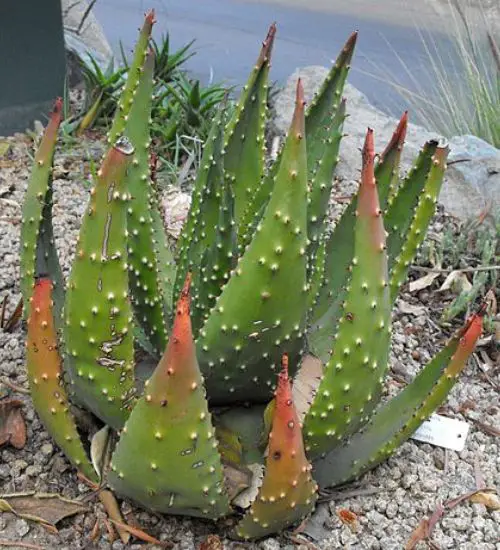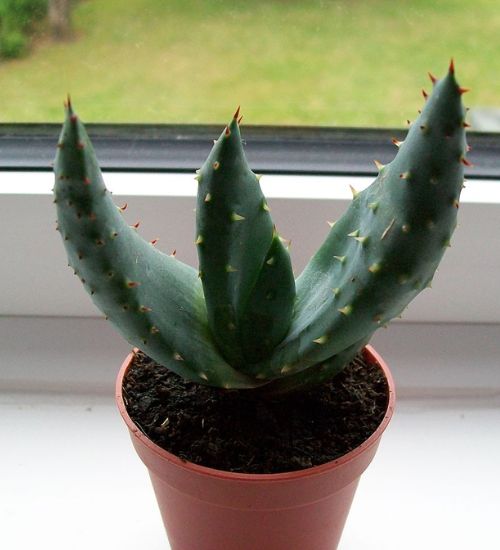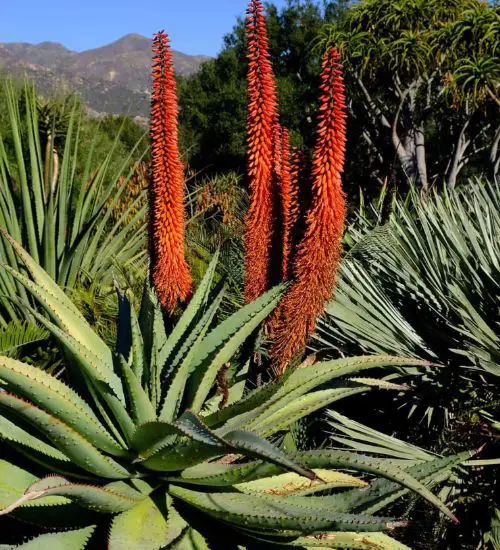Sun: full sun
Water: Typical water needs for a succulent
Temperature: Zone 9b from 25° F to 30° F (-3.9° C to -1.1° C) to Zone 11b from 45° F to 50° F (7.2° C to 10° C)
Winter Survival: Not cold hardy
Propagation: cuttings, seeds
Flower: in the Winter.
Flower Type: Yellow, Orange
Toxic: Can be toxic to humans and animals
Dormant: winter
Space Requirement: Indoors & Outdoors
Common Problems: Plants may rot if overwatered, pests
Where to buy Aloe Aculeata?
Basc Care for Aloe Aculeata
Watering
Can you water your succulent more than what its need? The answer is yes and no. In extreme conditions, you can water your plants more often when you notice the soil is completely dry.
One simple tip for you is that you can use some online apps to check the soil status before you go water your succulents. I would recommend the ThePlantsCheck app, it has some nice features there.
Fertilizing
Only feed this succulent during its active growing seasons which means no information. Use the right fertilizer applied in the right amounts. Applying half-strength balanced fertilizer every month or so is recommended for optimal results.
Do not fertilize during winter as the plant is dormant.
Sun & Location Requirements for "ngopanie, sekope, red hot poker aloe"
Aloe Aculeata requires full sun in order to thrive. When choosing a spot for your succulent, make sure it gets at least 6 hours of direct sunlight per day. If the leaves start to look pale or weak, this could be an indication that the succulent isn't getting enough light.
In order to protect Aloe Aculeata from freezing temperatures, it is important to provide adequate insulation and drainage. A layer of mulch or gravel will help protect the roots by keeping them warm during cold weather. In addition, protection from wind and sun exposure can help reduce the chances of frost damage.
Any succulents in the group will need a medium space to grow. You can place your pot at your table or window. Since this plant needs more space than mini succulents, you should consider do not plant them together with other succulents/plants.
Propagation
One way to propagate Aloe Aculeata is by cutting
Aloe Aculeata propagates easily from seeds, however it's important to look for healthy ones which are plump, dark in color and slightly sticky when touched. To start the propagation process, mix a soil mixture with well-draining potting mix then sow the seeds evenly and press them lightly into the surface. Finally, water the soil using a spray bottle and place it in bright but indirect light to ensure germination.
Toxicity

Aloe Aculeata can be toxic when ingested. All parts of the plant, such as stems, leaves and flowers, are potentially dangerous and can cause severe reactions in humans and animals when consumed. It is important to stay aware of potential dangers and avoid contact with the succulent if possible.
Pests and Diseases
Aloe Aculeata can be affected common pests and diseases like most of the other succulents such as aphids and scale insects.
If you do spot any of pest signs, you can treat your succulent using below methods.
- Aphids: quarantine, clean infected plants, soapy water.
- Scale insects: quarantine, clean infected plants, soapy water.
Besides that, to prevent serious health issues from happening, keep your succulent in a well-ventilated area and check it regularly for any signs of pests or health problems.


